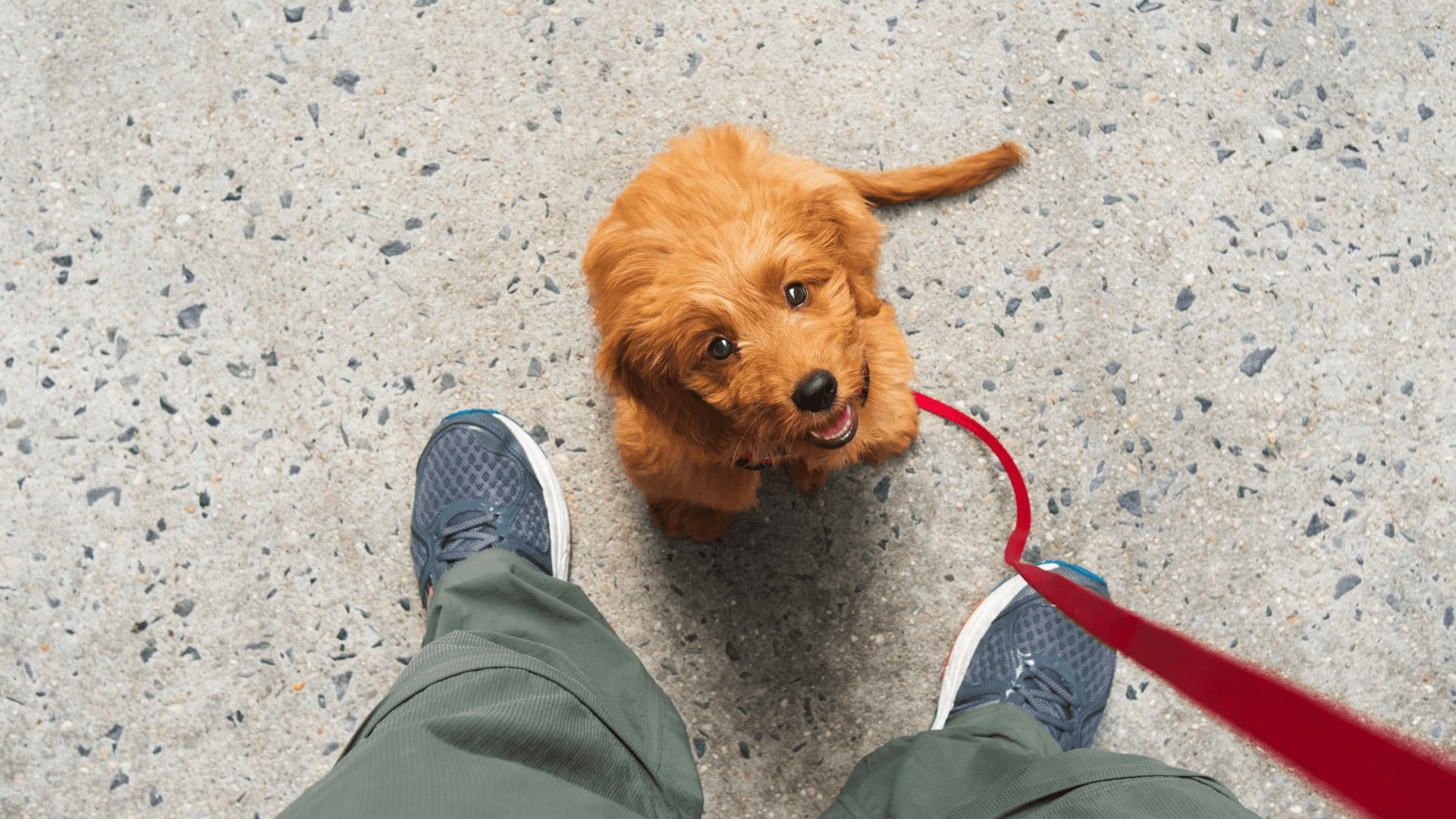
I’ve been a dog trainer for over three decades. Through the years, I’ve worked with countless families and their dogs. In my experience, leash training is one of the biggest challenges when it comes to raising a puppy.
I’ve worked with many adult dogs who never learned how to walk politely on a leash. And I see it every day! Each time I walk my dog, we pass by people being pulled down the street by their dog. I can only imagine how sore their shoulders must be after those walks. Ouch!
But leash training your puppy is about more than preventing sore shoulders. It is one of the best ways to improve your relationship with your dog. The more enjoyable walks are, the more exercise and mental stimulation both you and your dog will get. It’s a win-win for everyone!
As a new puppy guardian, leash training may seem intimidating at first. I’m here to help! With the right tools and some patience, you can make walks a joyful bonding experience.
In this guide, I will walk with you through the leash training process. We will explore my favorite techniques, step-by-step.
Do you have an older dog who still pulls on the leash? Keep reading! My methods will set you on the right track whether your pup is young or an adult dog.
So grab your leash and harness, and let’s enter the exciting world of leash training your puppy!
Your Leash Training Tool Belt
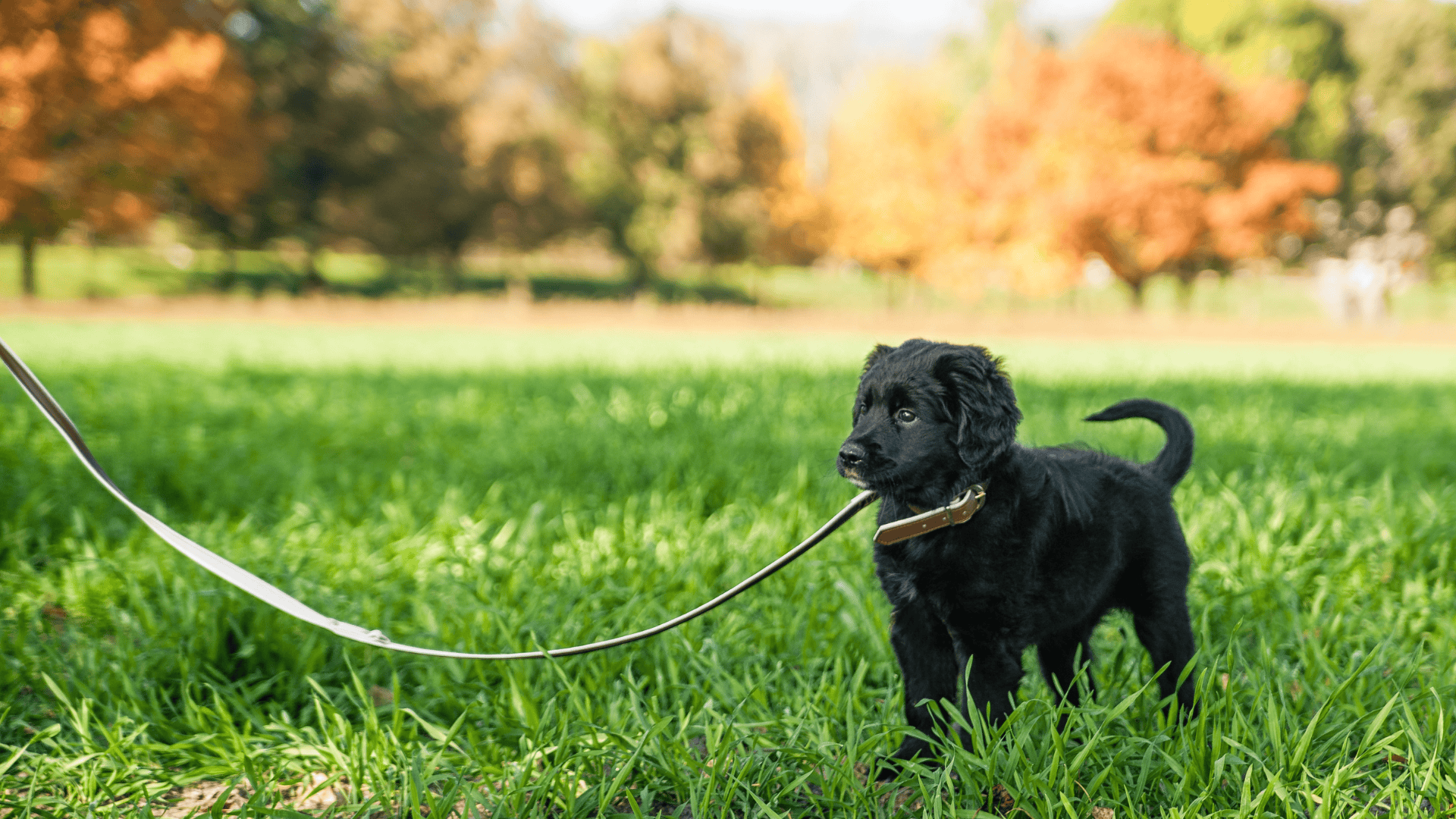 Maybe you need some help selecting the right equipment to leash train your pup. Gearing up for this adventure will help you feel more prepared. And your dog will feel more comfortable too!
Maybe you need some help selecting the right equipment to leash train your pup. Gearing up for this adventure will help you feel more prepared. And your dog will feel more comfortable too!
I only recommend a few supplies to set you up for success. Thankfully, leash training a puppy doesn’t need to break the bank! Here is what I suggest purchasing:
- A harness
- A long-line leash (or a long piece of rope)
- A collar with ID (my dog’s collar has our contact info embroidered on the fabric)
- A head collar or head halter
Though retractable leashes may be convenient, I don’t recommend them for leash training. They are not always safe when a puppy is walking near a busy street. I prefer to work with a long-line leash when training a puppy.
Read more about the training equipment I recommend in this post.
The Ideal Training Environment
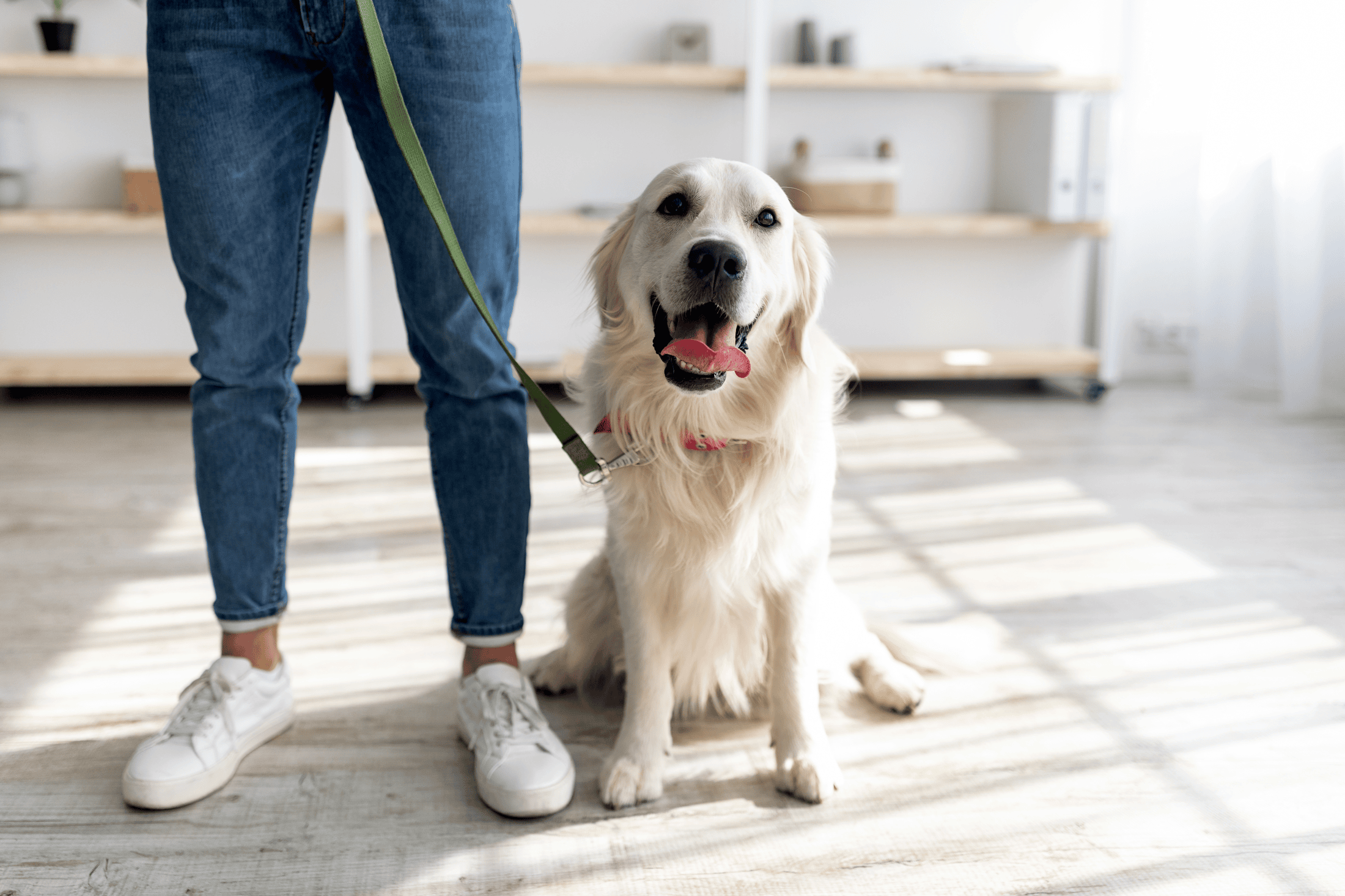 Dogs—and especially puppies—live in the moment. This is one of the greatest lessons they can teach us! But it also means that they can get very distracted when training.
Dogs—and especially puppies—live in the moment. This is one of the greatest lessons they can teach us! But it also means that they can get very distracted when training.
I always start leash training in a distraction free area. My favorite place to practice is indoors. There are far fewer scents and other dogs to distract your pup.
It might even be your pup’s first time wearing a harness and leash. That can be a bit overwhelming! It may take some getting used to. This is another reason I practice leash training indoors.
1 Minute Training Sessions
Young puppies have short attention spans. So, training sessions are most successful when they are short and sweet. This is the foundation of the 1 Minute Dog Training Method!
The quicker and easier your training sessions are, the more often you will practice. Your pup will stay more focused as well.
This approach works when leash-training adult dogs too. Start small. Praise your dog for every little win. Before you know it, your dog will be walking on a leash like a pro.
Techniques for Successful Loose Leash Training
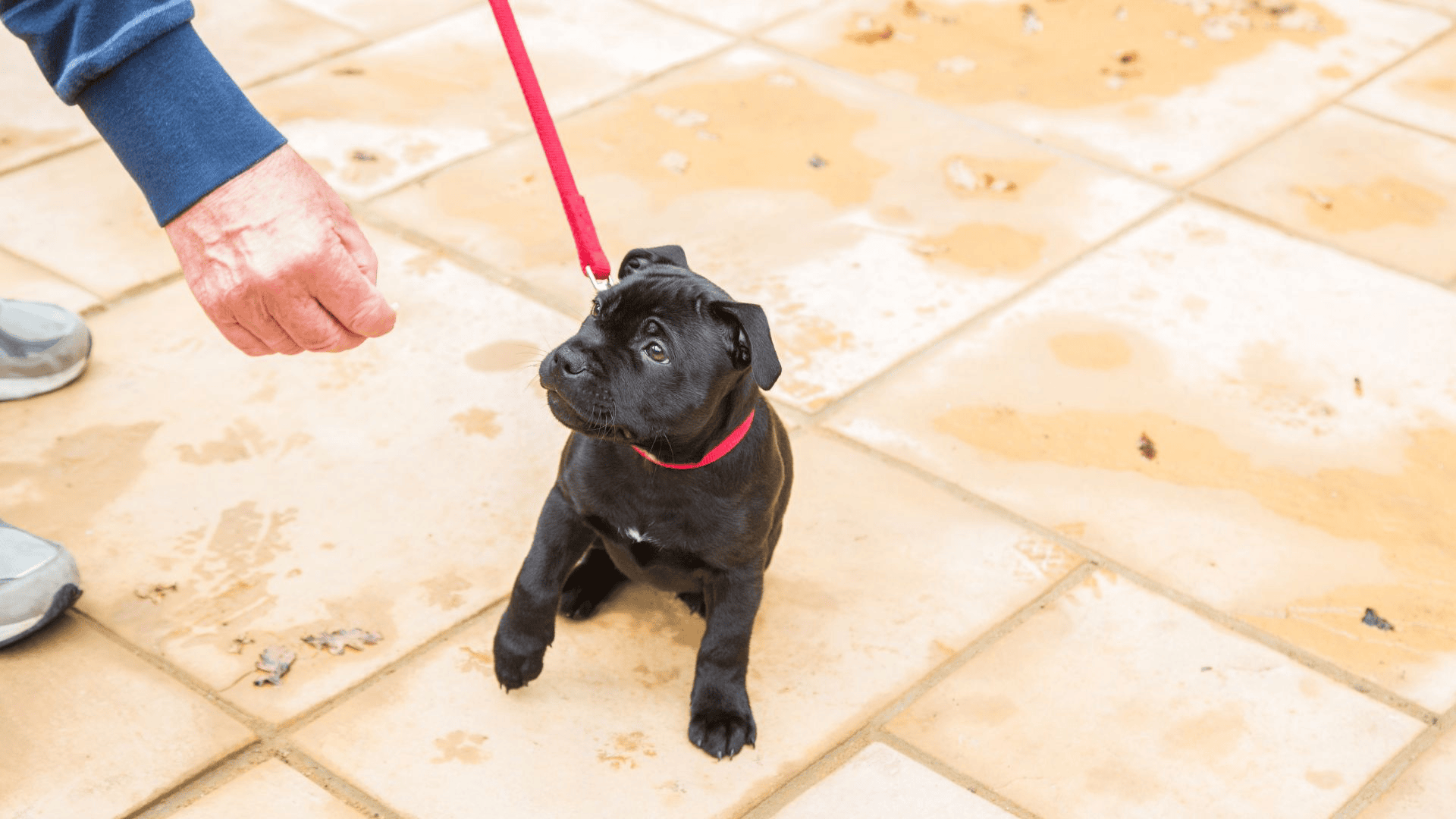 Leash training starts before you even put a leash on your dog. Showing your pup how to focus and listen is the heart of my leash training technique.
Leash training starts before you even put a leash on your dog. Showing your pup how to focus and listen is the heart of my leash training technique.
So, make sure you have been practicing sit, stay, and come in 1 minute sessions. These skills are the foundation for loose leash walking.
In this session, you will modify sit, stay, and come to sit, wait, and walk. Here’s how I do this:
- Staying inside the house, put the leash and harness on your puppy. Ask your pup to sit and wait. Take several breaths. Then, walk around with your dog on a leash, keeping her next to you.
- Occasionally stop walking, ask your dog to sit and wait, and drop the leash beside you.
- When your dog sits and waits, praise her thoroughly.
- Repeat the exercise.
Continue to cycle through sit, wait, and walk while still inside the house. This is the first step to leash training your dog effectively. It teaches your puppy to move with you while you walk.
Walking Concentration
After you’ve worked on sit, wait, and walk with your dog in a few 1 minute sessions, you can move on to what I like to call “Walking Concentration.” This is my favorite way to train a puppy to walk close by. It teaches excellent leash skills. I practice this indoors with a leash at first. Once you and your dog become more confident, try this without the leash.
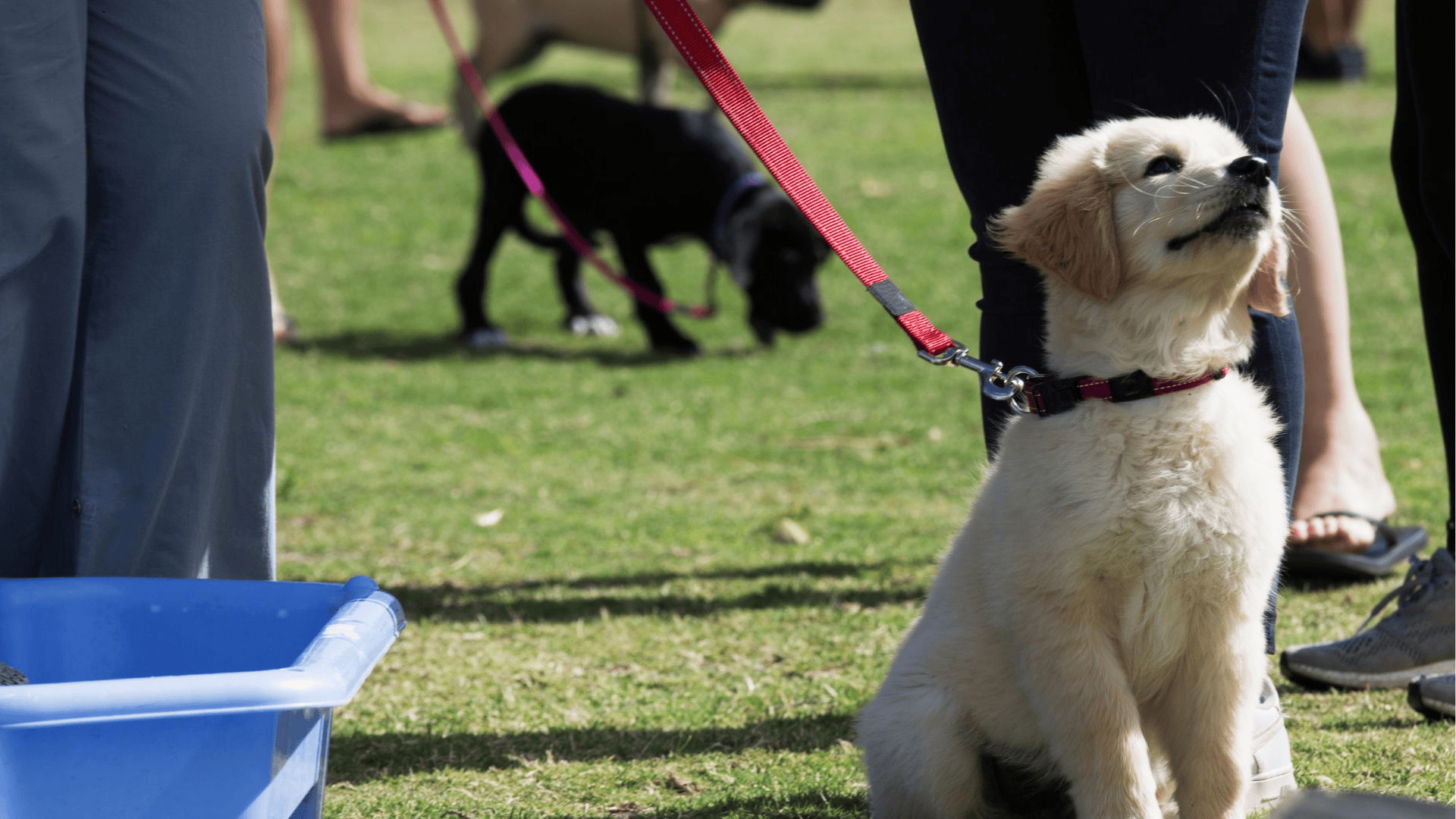 Walking Concentration: Step-by-step session
Walking Concentration: Step-by-step session
- Have your dog stand or sit next to you. Politely ask him to stay.
- Take one step and stop.
- Have your dog do the same, and then sit down.
- Look down and praise your dog.
- Take another step and pause.
- Do this about ten times and slightly increase the length of the pause.
I’ve found that this exercise comes in handy once you start walking your dog outside. When I hear a car coming, I tell my dog, “A car is coming, so I need you to sit next to me please.” She enthusiastically sits right at my heel. My dog loves this exercise because she knows she will always get praise for coming back to me.
Overcoming Obstacles
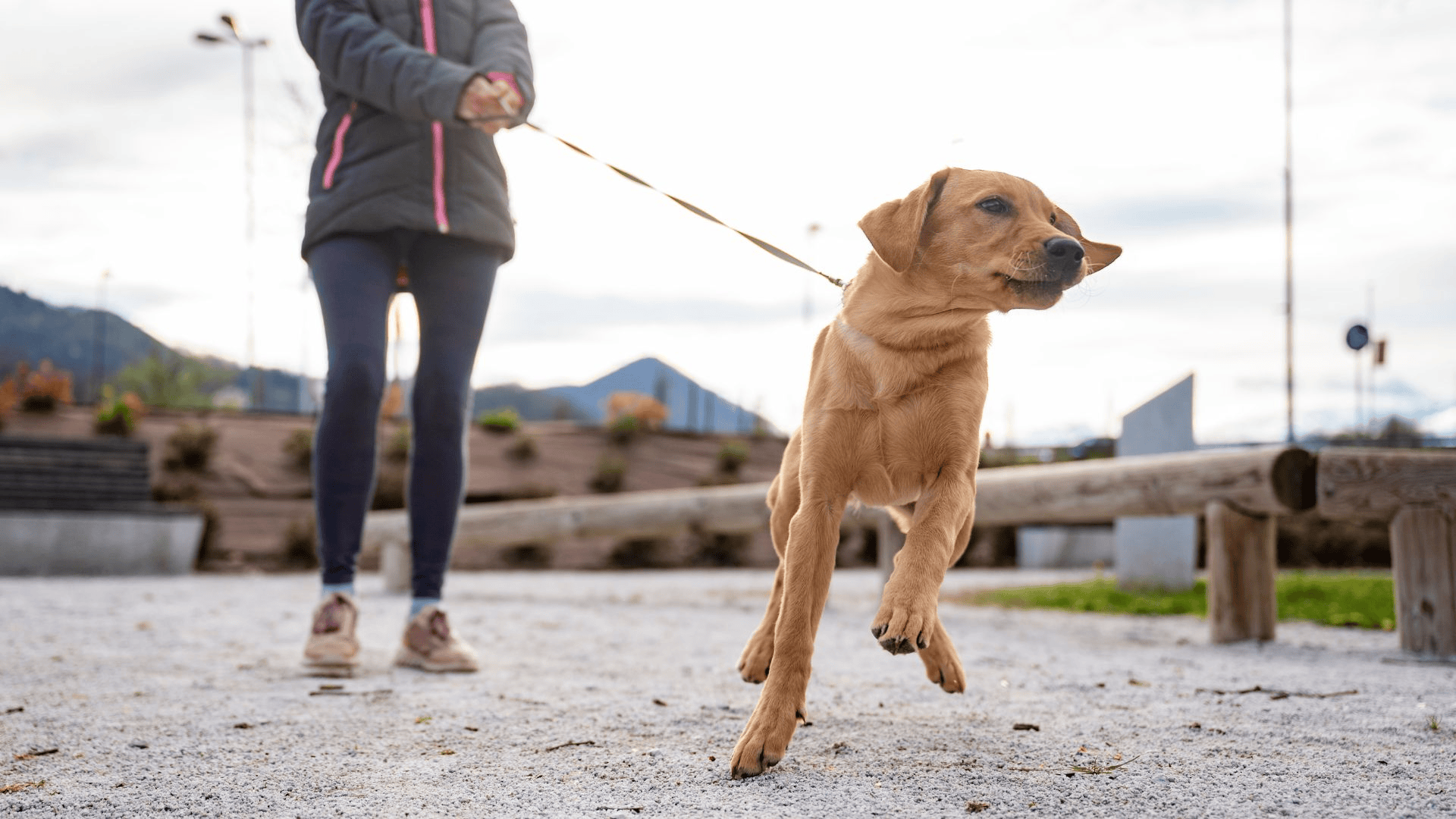 Sometimes, despite our best efforts, difficulties arise with leash training. In my experience, it helps to understand why dogs pull on the leash. For many dogs, a daily walk is their only interaction with the outside world. You would probably be really excited too!
Sometimes, despite our best efforts, difficulties arise with leash training. In my experience, it helps to understand why dogs pull on the leash. For many dogs, a daily walk is their only interaction with the outside world. You would probably be really excited too!
But just because our dogs have a good reason to pull on the leash doesn’t mean they should. Leash training is a life skill that I believe every dog should know.
To me, dog training is like a conversation. It requires listening to your dog’s wants and needs. And it’s about teaching your dog to listen to your needs, too.
Loose leash training creates a lasting bond with your dog, built on trust and understanding. Let’s explore some of the reasons why your pup may struggle to calmly walk on a leash.
Responding to Distractions
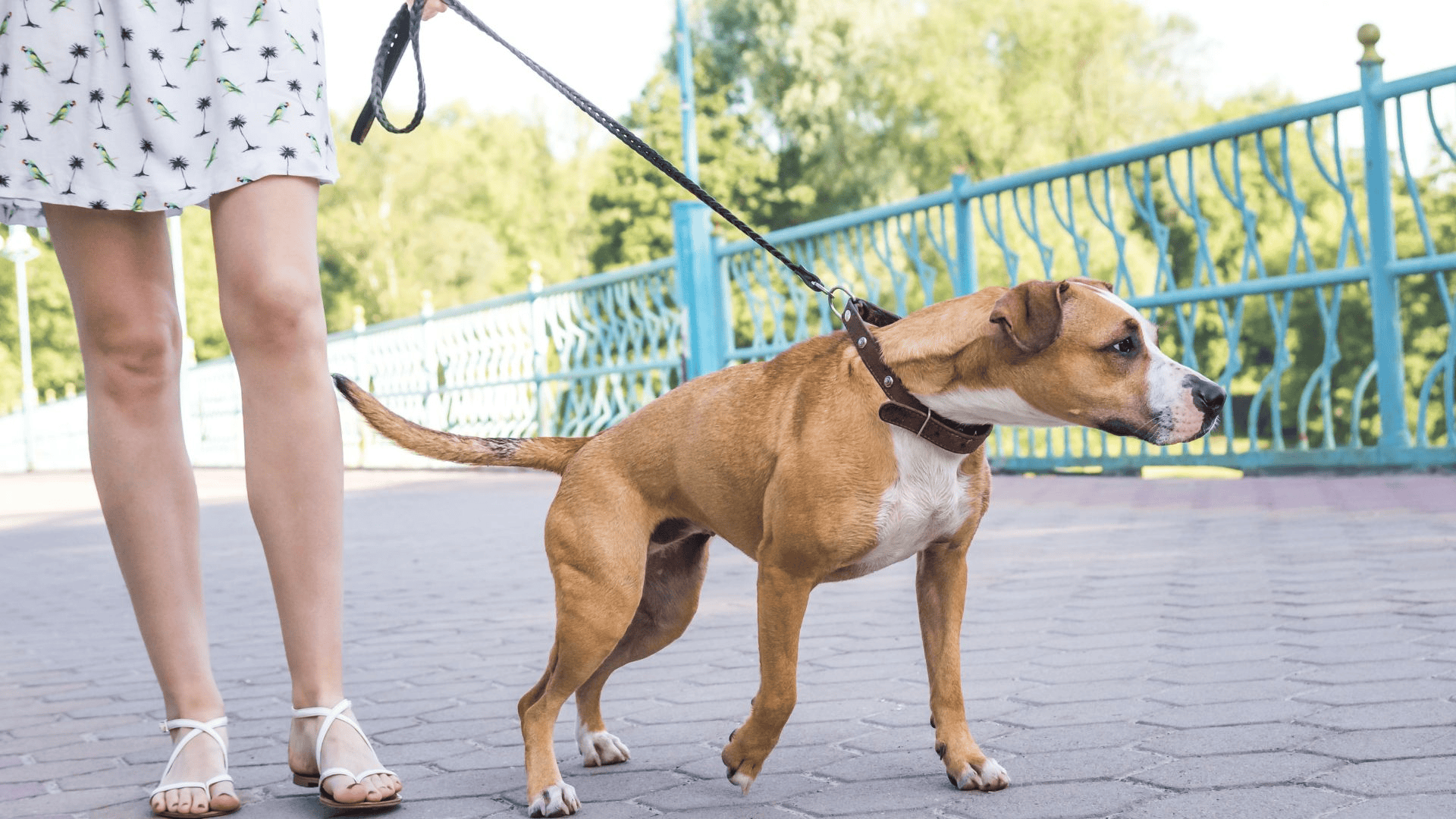 Dogs are naturally curious creatures, and distractions like other animals, people, or scents can easily derail leash training sessions. Teaching your pup to focus on you in even distracting environments takes patience and consistent practice.
Dogs are naturally curious creatures, and distractions like other animals, people, or scents can easily derail leash training sessions. Teaching your pup to focus on you in even distracting environments takes patience and consistent practice.
My dog regularly gets distracted on our walks. Sometimes, I let her nose guide her, and we go on a little adventure together. Studies have shown that this is very good for dogs’ mental health.
But we don’t always have time for a detour. When I want to regain my dog’s attention, we do a 1 minute training session together. We cycle through a few rounds of sit, stay, and come. Once she is focused, we walk forward.
Walking Through Varying Environments
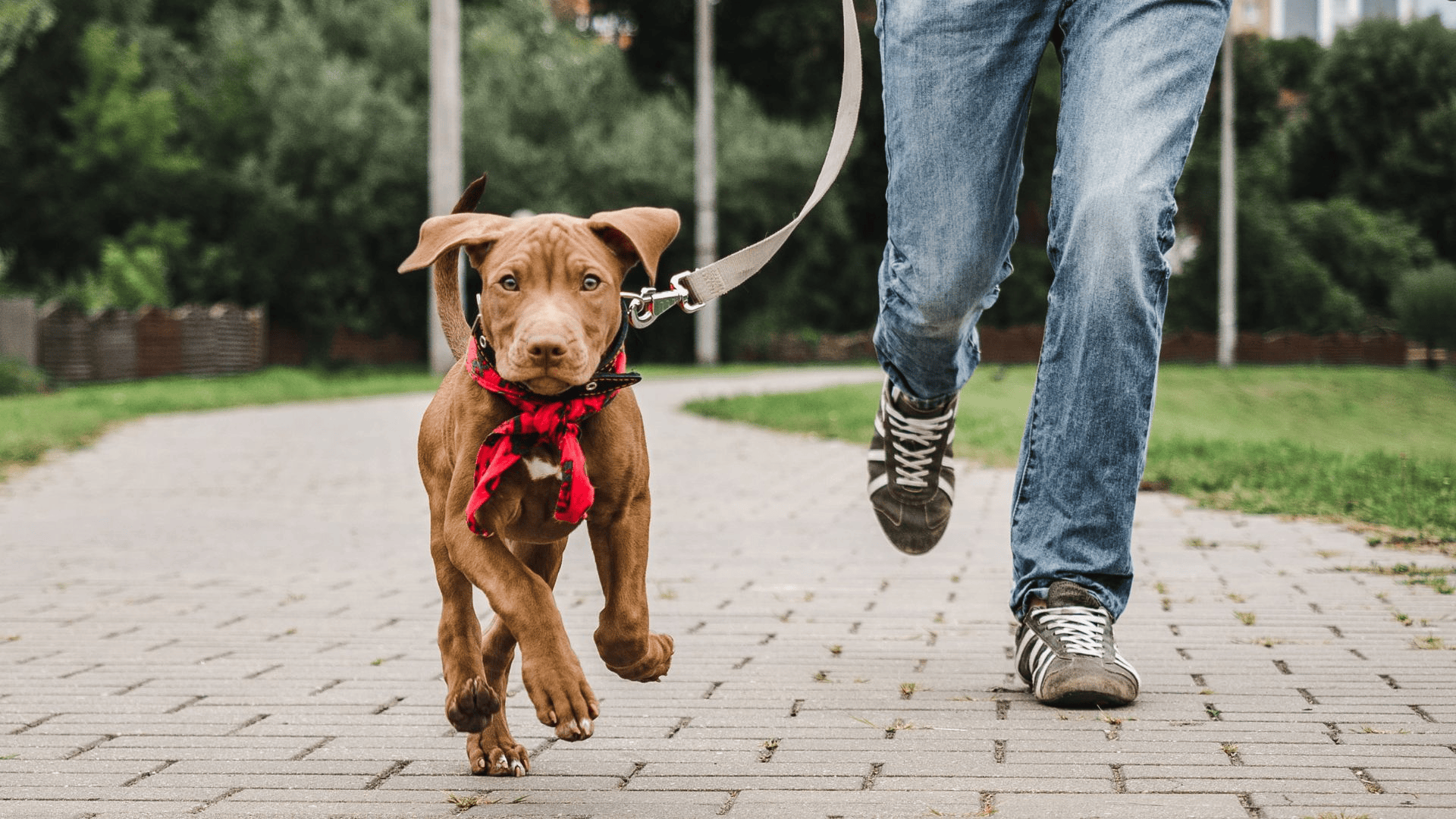 Most dogs will walk through all kinds of environments in their lifetimes. Whether you live in a quiet neighborhood or bustling city, it’s best to be prepared for anything on your walks.
Most dogs will walk through all kinds of environments in their lifetimes. Whether you live in a quiet neighborhood or bustling city, it’s best to be prepared for anything on your walks.
This is one reason why it’s important to socialize your puppy. Socialization is the process of teaching your dog to be confident in new situations. Read all about socialization in this post.
Your pup might be a loose leash pro in your neighborhood, but a bit of a puller in new environments with new smells. This is normal! Most dogs that I’ve worked with are very excited to explore new places.
The best approach in these situations is to learn your dog’s body language cues. Check in with her signals to see if she seems excited, fearful, happy, or aggressive. From there, you can decide how to move forward.
If your pup seems too excited to focus, do a 1 minute training session together. Practice a round or two of sit, stay, come, and continue your walk. If your puppy seems fearful or anxious, try to identify what might be causing stress. Do some calming TTouches and return home if necessary. If your dog seems aggressive, consider how often this happens. If aggression is a recurring problem, I recommend seeking help.
Advanced Challenges and Seeking Professional Help
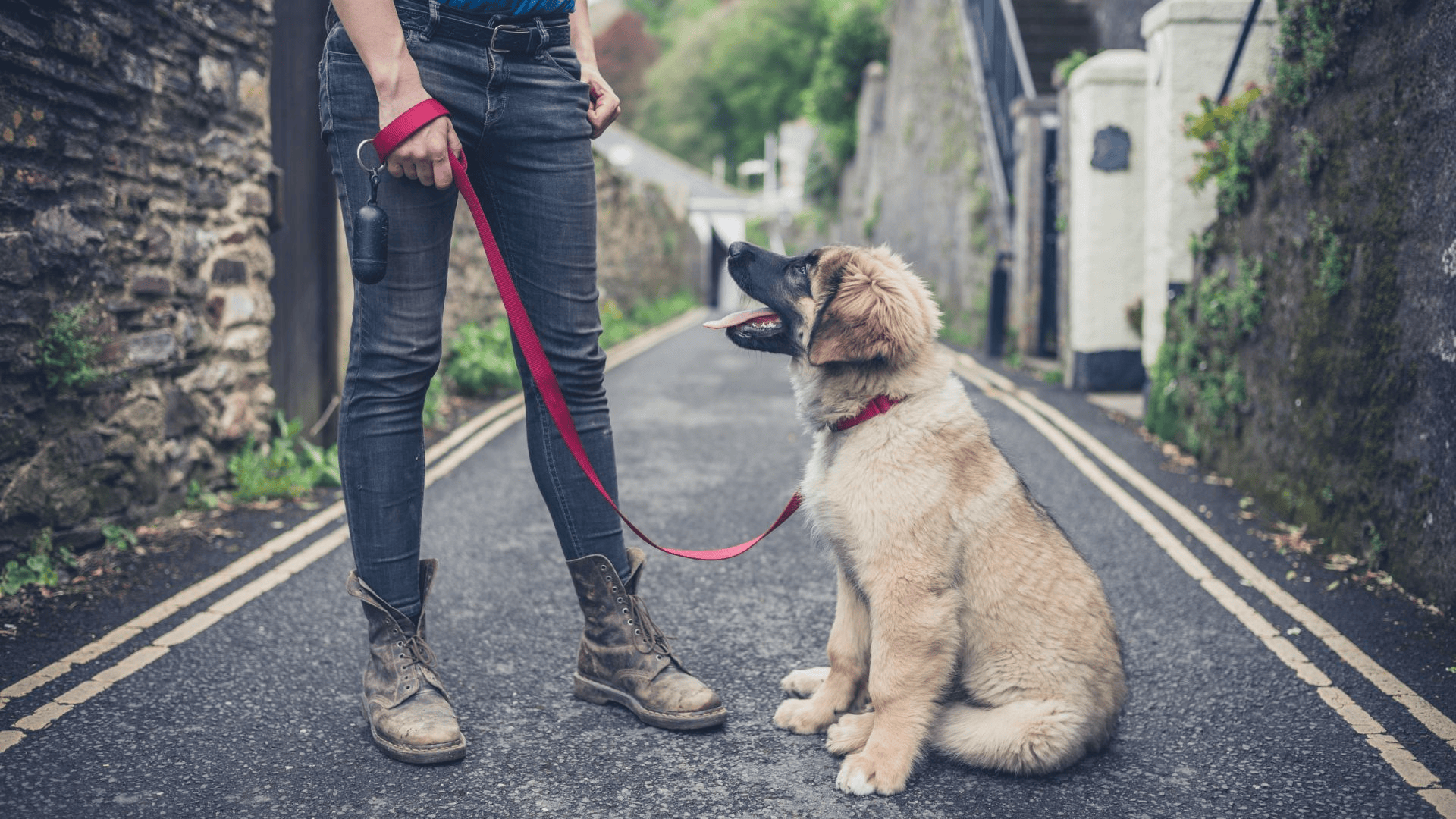
I think many people will find that consistent 1 minute daily training sessions are all you need to leash train your dog. But some dogs present challenges that are difficult to manage on your own.
Does your dog struggle with extreme pulling, leash aggression, or other challenges that you would like some extra help with? You might consider finding a professional dog trainer who specializes in leash training.
They can assess your situation and provide customized solutions. Remember, every dog is unique! Dogs are emotional and complex individuals, just like us. Sometimes, one-on-one professional guidance is just what you need.
Embracing the Journey of Leash Training
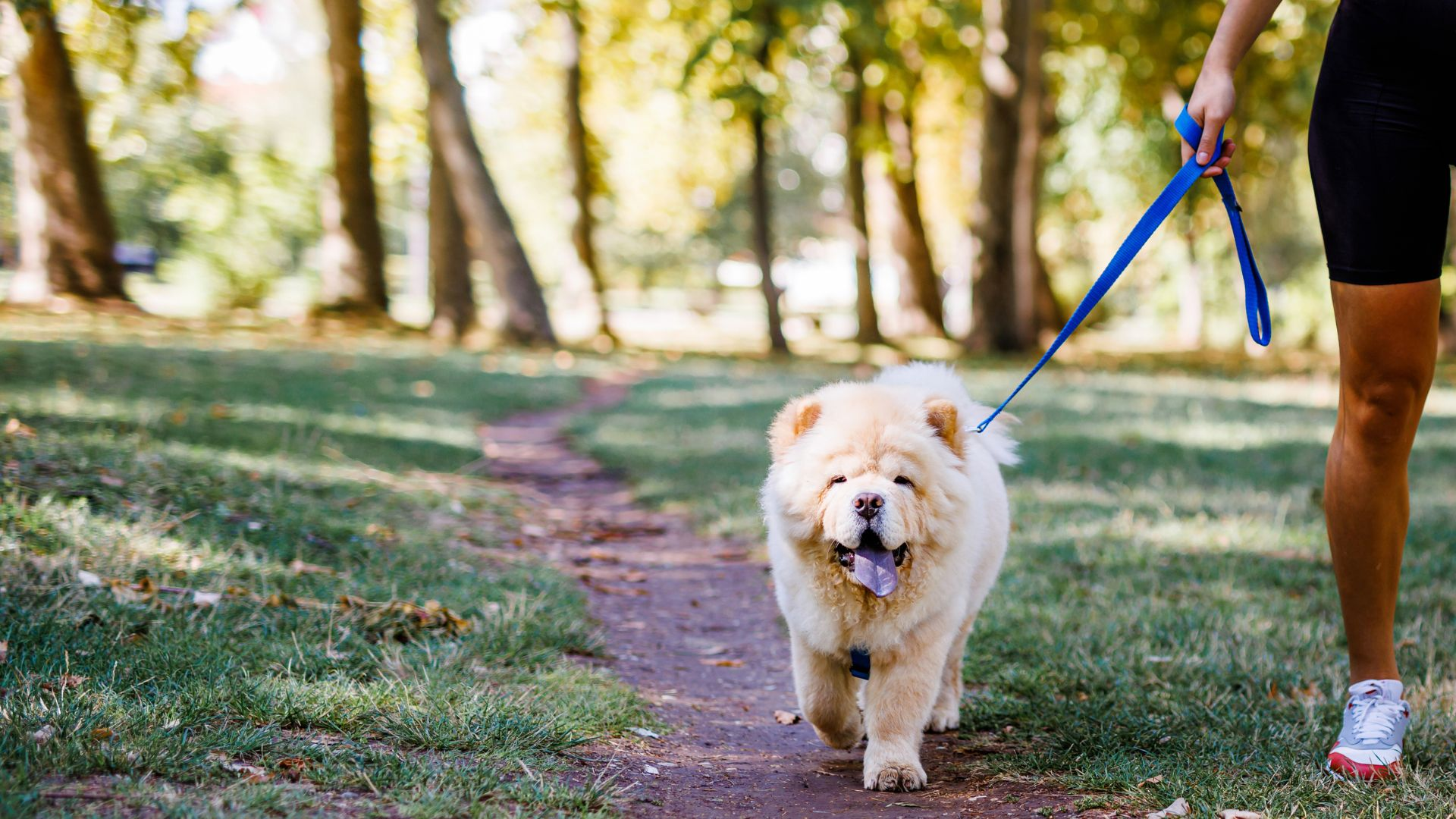 Leash training your puppy or adult dog is a lifelong process that strengthens your bond. Some of my favorite memories with my dog are from our daily walks.
Leash training your puppy or adult dog is a lifelong process that strengthens your bond. Some of my favorite memories with my dog are from our daily walks.
Walking is one of the healthiest things you can do together! And the more enjoyable it is, the more often you will do it. To me, leash training a puppy or adult dog is an investment in both your relationship and overall wellbeing.
With proper leash training, walking your pup becomes much more than an everyday errand – it becomes an opportunity to discover the world together. So, have fun! Enjoy these precious moments, and embrace challenges as an opportunity to grow as a team.
Happy walking!






